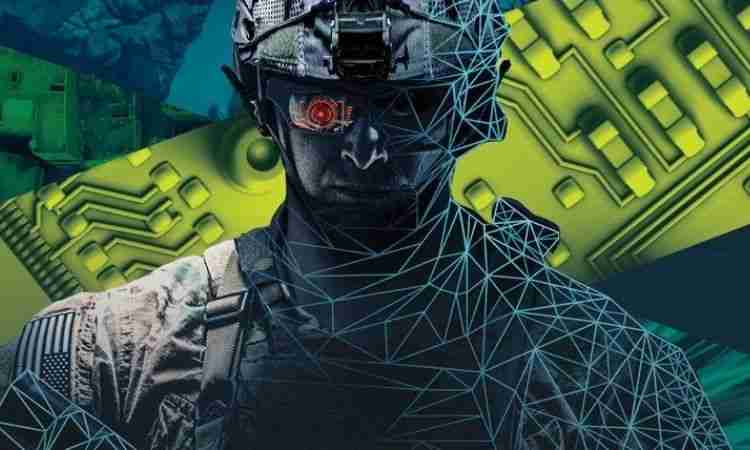
The evolution of warfare has entered a new era – the digital battlefield. In this modern landscape, where technology intertwines with tactics, the global digital battlefield market size stands at the forefront, poised for unprecedented growth. With a market size of nearly USD 51.62 billion in 2023, this sector is projected to surge at a staggering CAGR of 16.7% between 2024 and 2032, reaching a valuation of around USD 207.21 billion by 2032. As the world witnesses rapid advancements in technology, the digital battlefield emerges not only as a strategic necessity but also as a realm of innovation and opportunity.
Market Overview and Segmentation:
The digital battlefield encompasses a wide array of technologies and solutions tailored to modern military operations. This market can be segmented into various categories, including:
- Cybersecurity Solutions: With the increasing threat of cyber warfare, robust cybersecurity measures have become indispensable for military organizations worldwide.
- Communication Systems: Seamless communication is the lifeline of any military operation. Advanced communication systems enable real-time data exchange and coordination among troops.
- Command and Control Systems: These systems provide commanders with the necessary tools to monitor, analyze, and make informed decisions on the battlefield.
- Surveillance and Reconnaissance: Unmanned aerial vehicles (UAVs), satellites, and other surveillance technologies play a crucial role in gathering intelligence and maintaining situational awareness.
- Artificial Intelligence (AI) and Machine Learning: AI-powered systems enhance decision-making capabilities, automate processes, and optimize resource utilization on the battlefield.
Key Benefits:
The adoption of digital battlefield technologies offers numerous benefits to military organizations worldwide:
- Enhanced Situational Awareness: Real-time data analytics and surveillance systems provide commanders with unparalleled visibility into the battlefield, enabling proactive decision-making.
- Improved Operational Efficiency: Automation and AI-driven solutions streamline military operations, reducing response times and minimizing human error.
- Reduced Casualties: Advanced communication systems and unmanned vehicles mitigate the need for boots on the ground in high-risk environments, thus minimizing the risk to personnel.
- Cyber Resilience: Robust cybersecurity measures protect critical infrastructure and data from cyber threats, safeguarding military assets and operations.
- Strategic Advantage: Military organizations equipped with cutting-edge digital battlefield technologies gain a competitive edge over adversaries, ensuring superiority in modern warfare scenarios.
Key Industry Developments:
The digital battlefield market is witnessing rapid evolution and innovation, driven by:
- Technological Advancements: Breakthroughs in AI, cybersecurity, and communication technologies are revolutionizing the capabilities of digital battlefield systems.
- Strategic Partnerships: Collaborations between defense contractors, technology companies, and government agencies are fueling the development and deployment of advanced solutions.
- Focus on Interoperability: Integration and interoperability among disparate systems are key priorities for military organizations, driving demand for standardized solutions.
- Shift Towards Network-Centric Warfare: The concept of network-centric warfare, emphasizing connectivity and information sharing, is reshaping military doctrines and driving investments in digital infrastructure.
Driving Factors:
Several factors are driving the growth of the digital battlefield market:
- Growing Threat of Cyber Warfare: The increasing frequency and sophistication of cyber attacks have heightened the demand for robust cybersecurity solutions among military organizations.
- Geopolitical Tensions: Escalating geopolitical tensions and regional conflicts have spurred investments in defense modernization and technological innovation.
- Need for Situational Awareness: In today’s complex operational environments, situational awareness is paramount. Military organizations are investing in advanced surveillance and reconnaissance capabilities to maintain a competitive edge.
- Embrace of AI and Automation: The integration of AI and automation technologies enhances decision-making processes, improves operational efficiency, and reduces human intervention on the battlefield.
- Shift Towards Digitization: Governments worldwide are prioritizing digitization efforts across defense sectors, fostering the adoption of digital battlefield technologies.
COVID-19 Impact:
The COVID-19 pandemic has had a mixed impact on the digital battlefield market:
- Acceleration of Digitization: The pandemic has accelerated the digitization of military operations, with a greater emphasis on remote connectivity, virtual training, and unmanned systems.
- Supply Chain Disruptions: Disruptions in global supply chains have temporarily hindered the production and deployment of digital battlefield technologies, leading to delays in procurement processes.
- Increased Cyber Threats: The shift to remote work and heightened reliance on digital infrastructure have exposed military organizations to increased cyber threats, necessitating enhanced cybersecurity measures.
- Budgetary Pressures: Economic downturns resulting from the pandemic have forced governments to reassess defense budgets, potentially impacting funding for digital battlefield programs.
Restraint Factors:
Despite its growth potential, the digital battlefield market faces certain challenges:
- Interoperability Challenges: Integrating legacy systems with modern digital battlefield technologies poses interoperability challenges, requiring significant investments in infrastructure and standards development.
- Cybersecurity Concerns: The interconnected nature of digital battlefield systems increases vulnerability to cyber attacks, necessitating continuous investment in cybersecurity measures and protocols.
- Ethical and Legal Considerations: The use of AI and autonomous systems in warfare raises ethical and legal concerns regarding accountability, transparency, and compliance with international laws of armed conflict.
- Resource Constraints: Limited budgets and competing priorities may constrain the adoption of advanced digital battlefield technologies, particularly among smaller defense organizations.
- Dependency on External Factors: The performance and effectiveness of digital battlefield systems may be influenced by external factors such as environmental conditions, terrain, and adversary tactics.
Major Key Players:
- Raytheon Technologies Corporation
- Atos SE
- Northrop Grumman Corporation
- Elbit Systems Ltd.
- Leonardo S.p.A.
- Lockheed Martin Corporation
- Rheinmetall AG
- L3Harris Technologies, Inc.
- Rafael Advanced Defense Systems Ltd.
- Thales Group
- Israel Aerospace Industries
Click here to checkout our other reports:- https://www.expertmarketresearch.com.au/